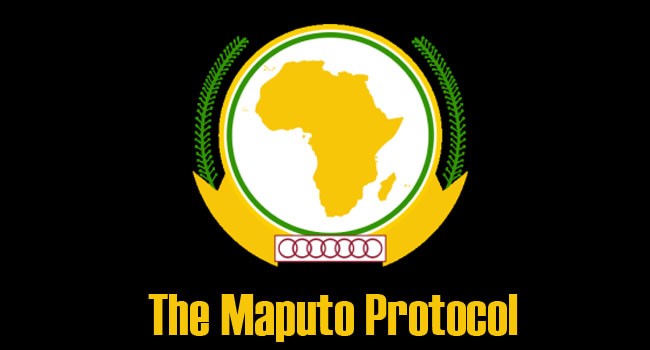According to a new report titled 20 years of the Maputo Protocol, some progress has been made in gender equality. Where are we now?
What’s in News?
To mark the 20th anniversary of Maputo Protocol to promote the continued adaptation and implementation of its progressive provisions, a landmark report has been prepared by the Solidarity for African Women’s Rights Coalition (SOAWR), Equality Now and Make Every Women Count (MEWC), titled 20 years of the Maputo Protocol.
The report ’20 Years of the Maputo Protocol’:
The report summarizes the progress that has been made in Africa to date towards the ratification, domestication and implementation of the Maputo Protocol with a series of detailed case studies illustrating some key achievements and challenges along the way.
The evidence is presented alongside recommendations from SOAWR Member Organizations to support states in their continued efforts towards advancing gender equality on the continent.
About the Maputo Protocol:
The protocol to the African Charter on Human and People’s Rights of Women in Africa, known as Maputo Protocol is an international human rights instrument established by the African Union.
Adoption:
It was adopted by the African Union in Maputo, Mozambique in 2003 in the form of a protocol to the African Charter on Human and People’s Rights.
It went into effect in 2005.
Ratification:
- Of the 55 member states, 44 have ratified or acceded to the protocol on gender equality, becoming one of the most ratified instruments in the AU.
- Full domestication of the protocol in many of the states has been slow or ineffective.
- Some states of the Africa are yet to ratify or accede to the protocol.
Mandate:
It guarantees comprehensive rights to women including the right to take part in the political process, to social and political equality with men, improved autonomy in their reproductive health decisions and end-to-end female genital mutilation.
African Women’s Rights under Maputo Protocol:
The Protocol provides extensive rights to African Women and Girls and includes progressive provisions on:
- Harmful traditional practices e.g. child marriage and female genital mutilation (FGM).
- Reproductive health and rights.
- Roles in political processes.
- Economic empowerment.
- Ending violence against women.
Findings of the Report:
Regarding Ratification:
- The protocol has a target of universal ratification of African States by However, with just five years to the target there are still 12 countries are yet to ratify.
- Maputo Protocol is considered as the fastest human rights treaty to enter into force, if ratification and entry into force are considered.
Efforts:
To promote the gender equality several efforts have been made over the last past 2 years under all the provisions of the Maputo Protocol which include advancing reproductive health and rights, facilitating equal access to women and participation in political processes, economic empowerment and ending violence against women.
Women’s Labour Force Participation Rate:
According to the report of the last two decades 2003-2022, Women’s Labor Participation Rate in most of the African States is low which means in those countries women and girls are not getting the same rights as the women and girls have on the continent.
Impact of the Protocol:
- The Maputo Protocol has played a crucial role in accelerating positive changes across Africa. Many of the countries that have ratified the protocol have taken steps to align their national laws with its provisions.
- In December, 2019, the ECOWAS Court of Justice made a rule that pregnant school girls in Sierra Leone should not be banned from going to school. Following the court’s rule the government of Sierra Leone lifted the ban in March 2020.
- In Uganda, campaigners filed a case at the constitutional court of Uganda urging it to declare FGM illegal. The Court found FGM to be in breach of rights set out in the Ugandan Constitution as well as international treaties such as the Maputo Protocol.
- The protocol also helps prevent inaction on protecting Women’s rights.
Challenges and Gaps:
Ineffective Implementation:
12 countries of the Africa are yet to be ratified, this effects the implementation of the protocol across the continent.
Deep-rooted Patriarchy:
Deep-rooted Patriarchy systems and harmful cultural norms continue to impede progress in many countries.
An estimated of 55 million girls under the age of 15 in 28 African countries have experienced or at a risk of experiencing FGM. This is despite 22 of the 28 countries having already criminalized the practice.
Uneven Progress:
According to the report progress is not evenly recorded, women are facing better in some areas compared to others.
Gaps in Implementation:
Gaps in the implementation of some of the clauses of the protocol present another challenge.
- While the report highlights advances in some areas such as education, it also highlights worker’s rights as an area of concern.
- In theory, certain rights were protected by domestic and international laws, the reality of implementation often did not filter through.
- The report raised concerns over a lack of protection for informal workers.
LFPR and Gender Equality:
- The rate of women’s labour force participation remained low as compared to men in the last two decades.
- The report shows that the share of women in the labor force have decreased in 24 countries.




 Which is the Highest Desert in the World...
Which is the Highest Desert in the World...
 U-19 Asia Cup Schedule 2025: Full List o...
U-19 Asia Cup Schedule 2025: Full List o...
 U-19 Asia Cup 2025, Vaibhav Suryavanshi ...
U-19 Asia Cup 2025, Vaibhav Suryavanshi ...







